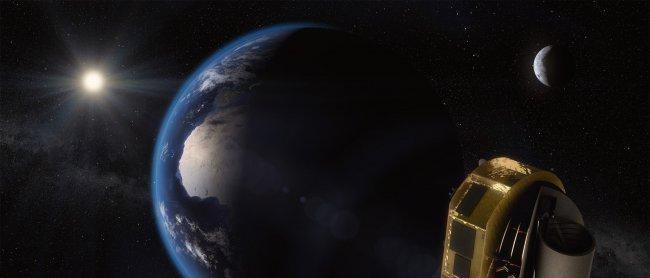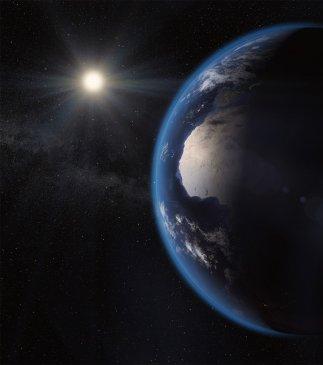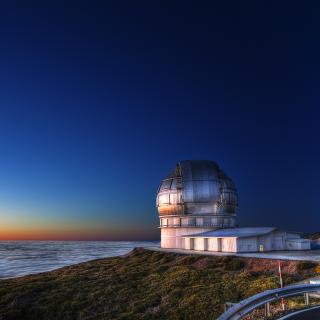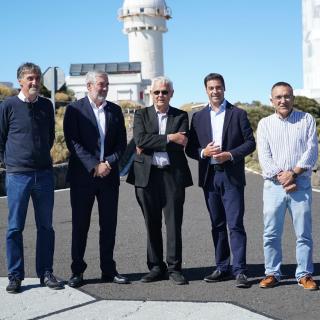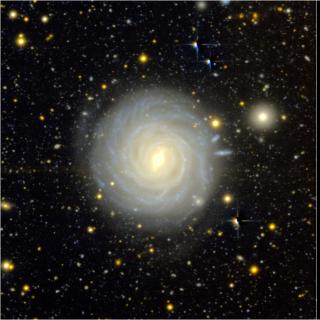The European Space Agency (ESA) has just announced that its next medium-size scientific mission will be ARIEL (Atmospheric Remote-sensing Infrared Exoplanet Large survey). The project will have a useful lifetime of four years in space and its launch is scheduled for 2028. While it remains in orbit, it will observe around 1,000 planets and carry out the first large scale study of the chemistry of the atmospheres of these exoplanets.
“This mission will enable the systematic study of the formation and evolution of exoplanets, particularly their atmospheres”, explains Enric Pallé, an IAC researcher and one of the participants in this project. He continues, “ARIEL will study earthlike planets, but hot ones”, in other words, those that orbit close to their star.
ARIEL was developed by a consortium of more than 60 institutes from 15 ESA countries, including the United Kingdom, France, Italy, Poland, Spain, The Netherlands, Belgium, Austria, Denmark, Ireland, Hungary, Sweden, Germany, and Portugal, with the further collaboration of NASA. The IEEC (Institut d'Estudis Espacials de Catalunya) heads the Spanish participation. Apart from its scientific contribution, it is participating in the building of the mission, including the satellite's electronic system, which controls the telescope and movements of the secondary mirror, as well as the computer programs that schedule the observations of planets and are used in ESA ground control. The other Spanish institutions involved in the project are the Astrobiology Centre of the Polytechnic University of Madrid and the Instituto de Astrofísica de Canarias (IAC).
“Although, so far, we've discovered around 3800 planets orbiting other stars, the nature of these exoplanets remains very mysterious”, comments Ignasi Ribas, an astrophysicist at IEEC-CSIC and Principal Investigator of ARIEL in Spain. He adds: “ARIEL will study a sample that is statistically large enough to give us a truly representative picture of what these planets are made of. This will enable us to answer questions on how the chemistry of a planet is linked with the environment in which it was formed, and how its birth and evolution depend on the star it orbits”.
This mission will study a diverse population of exoplanets, ranging from those of the size of Jupiter and Neptune to the so-called super-earths, in a large variety of environments. The main emphasis of the mission will be on planets in close orbits around their stars. Hot exoplanets, with temperatures of up to 2000oC, are a natural laboratory in which to study the chemistry and formation of planets, given that their high temperatures maintain the different molecular species in circulation through the atmosphere, thus making them remotely observable.
ARIEL will have a telescope with a one-metre diameter primary mirror to collect visible and infrared light from these planetary systems orbiting distant stars. A spectrometer will split the light into its constituent “rainbow” in order to trace the chemical fingerprints of the atmospheric molecules when the planet passes in front of, or behind, the star. A photometer and scanning system will gather information on the presence of clouds in the exoplanet atmospheres and allow the telescope to be pointed towards the star with great stability and precision.
The ARIEL satellite will be launched from Kourou in French Guiana and will be placed in orbit at the L2 Lagrange point, which is a point of gravitational equilibrium 1.5 million kilometres from the Earth (the Sun, Earth, and L2 point form a straight line).
At this point the satellite will be protected from the Sun and will have an unimpeded view of the whole sky in order to observe a large number of exoplanets. The James Webb Space Telescope (JWST), scheduled for launch in 2019, will also be located in this region. In theory, there will be no overlap in time, since ARIEL is planned as a successor mission to the JWST in the study of exoplanets and their atmospheres.
The project manager of Spain's participation in the project, Josep Colomé of the IEEC-CSIC, emphasizes: “ESA's selection of ARIEL is great news. It gives recognition of the engineering work carried out over the last two years and will boost the space technology we're developing for this and other missions in close collaboration with Industry in the sector. ARIEL enables us to work with world-leading research centres and puts us in the first division of space technology”.
Interesting links and further information:
- IEEC press release: La misión ARIEL seleccionada como próxima misión científica media de la ESA
- ESA press release: ESA's next science mission to focus on nature of exoplanets
- ARIEL press release: ARIEL selected as ESA's next medium-class science mission
